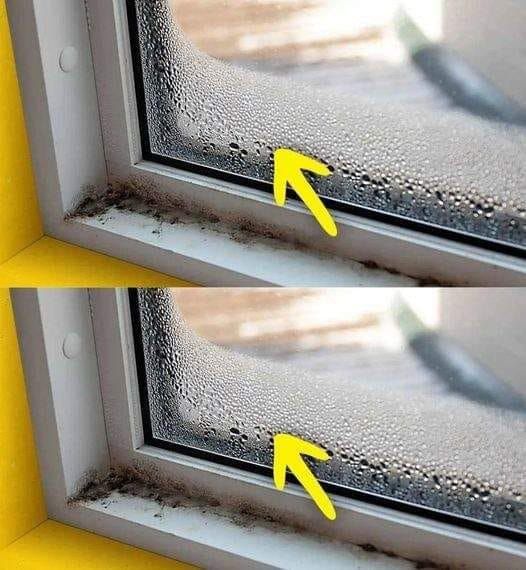ADVERTISEMENT
Improving airflow in your home helps reduce the moisture trapped inside and balances humidity levels.
3. Install Moisture Barriers
If you live in a humid climate or have a basement or crawl space, installing moisture barriers can help keep excess moisture from seeping into your home. Moisture barriers are particularly useful in spaces like basements, which are prone to dampness and high humidity levels.
- Plastic Sheeting or Vapor Barriers: You can install vapor barriers in your basement or crawl spaces. This involves laying plastic sheeting or specialized moisture barriers over the ground to prevent moisture from rising into the living spaces above.
- Seal Gaps and Cracks: Ensure that there are no gaps or cracks around windows, doors, or foundation walls that could allow moisture to enter your home. Sealing these areas can help keep humidity levels in check.
By preventing moisture from entering your home, moisture barriers reduce the overall humidity in areas that are most prone to excess moisture.
4. Use Houseplants Wisely
While plants can add beauty to your home, some houseplants can contribute to indoor humidity, especially when overwatered. If you’re looking to reduce humidity, you may want to reconsider the types and number of houseplants you keep. However, not all plants will raise humidity levels.
- Moisture-Reducing Plants: Some houseplants, such as peace lilies, English ivy, or spider plants, can help absorb moisture from the air, thus lowering humidity levels. These plants naturally absorb moisture as part of their growth cycle and can help reduce humidity in small spaces.
- Watering Habits: If you have houseplants that require regular watering, be mindful of overwatering. Excess water in plant trays or pots can evaporate and contribute to indoor humidity. Always make sure plants have proper drainage and avoid leaving excess water in trays.
Being mindful of your houseplants’ water needs and choosing moisture-reducing plants can help regulate humidity in your home.
5. Reduce Heat Sources in the Home
When your home is too warm, it can feel even more humid because warm air holds more moisture. Excess heat in your home can also make it harder for air conditioning or ventilation systems to maintain optimal humidity levels. To reduce humidity, it’s important to control heat sources within your home.
- Use Air Conditioning: Air conditioners help cool the air and also dehumidify it. When running your air conditioner, it can remove moisture from the air, lowering indoor humidity levels.
- Limit Cooking with Open Flames: Cooking with gas stoves or other heat sources can introduce additional moisture into the air. If possible, try to cook with the windows open or use an exhaust fan.
- Turn Off Heat-Producing Appliances: Appliances like space heaters, stoves, and dryers generate heat, which can raise indoor humidity. Make sure to turn off these appliances when not in use.
By reducing heat sources and relying on air conditioning to control the temperature, you can keep indoor humidity at a manageable level.
6. Use Silica Gel or Desiccants
Desiccants, such as silica gel, are materials that absorb moisture from the air, making them ideal for reducing humidity in small spaces. Silica gel packets are commonly used to prevent moisture buildup in packaged products, but they can also be used around the house to absorb excess humidity.
- Silica Gel Packs: Place silica gel packets or bags in areas where moisture tends to accumulate, such as closets, drawers, and cabinets. These desiccants will absorb excess moisture and help keep the area dry.
- Other Desiccants: Clay-based desiccants, activated charcoal, or calcium chloride crystals are also effective at absorbing moisture. These can be placed in specific areas like basements or attics where humidity is more prevalent.
Using desiccants in high-humidity areas can be a quick and easy way to reduce moisture in confined spaces.
7. Regularly Clean and Dry Damp Areas
Certain areas of your home are more prone to moisture buildup, especially in places where water is regularly used. Regular cleaning and drying of these areas will help prevent moisture from accumulating and reduce overall humidity in the house.
- Bathroom Maintenance: After taking a shower, wipe down bathroom surfaces such as walls, mirrors, and shower doors to prevent moisture buildup. Use a squeegee to remove water from tiles and glass to prevent condensation.
- Dry Laundry Promptly: Avoid letting wet clothes sit in the laundry room or on drying racks for too long. Damp laundry can increase humidity levels in the room. Ensure clothes are dried in a well-ventilated area, or use a vented dryer if possible.
- Fix Leaks Immediately: Leaking pipes, faucets, or roofs can increase indoor humidity by allowing water to seep into walls, ceilings, and floors. Inspect your home for leaks regularly and fix them promptly.
By keeping damp areas dry and clean, you can prevent excessive moisture buildup that contributes to indoor humidity.
Conclusion
Excessive humidity in the home can lead to a range of problems, including mold growth, discomfort, and potential damage to your property. Fortunately, there are simple and effective ways to reduce humidity levels and create a more comfortable living environment. By using a dehumidifier, improving ventilation, installing moisture barriers, and being mindful of your plants and heat sources, you can easily eliminate humidity from your home. Additionally, incorporating silica gel and regularly cleaning damp areas will further help in managing moisture levels. By following these seven tips, you can enjoy a healthier, more comfortable living space with optimal humidity levels all year round.
ADVERTISEMENT
